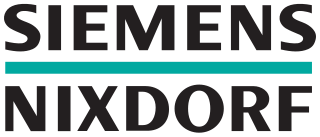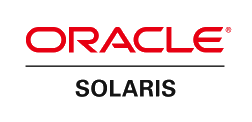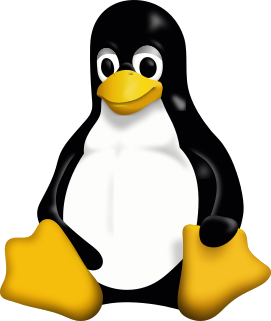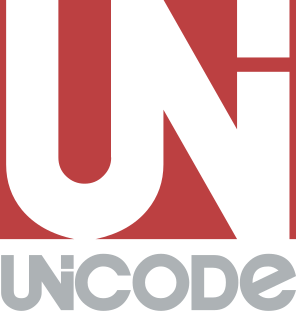
Mainframe computers or mainframes are computers used primarily by large organizations for critical applications; bulk data processing, such as census, industry and consumer statistics, enterprise resource planning; and transaction processing. They are larger and have more processing power than some other classes of computers: minicomputers, servers, workstations, and personal computers.
BS2000 is a mainframe computer operating system developed in the 1970s by Siemens and from early 2000s onward by Fujitsu Technology Solutions.
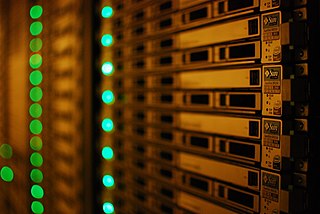
Sun Fire is a series of server computers introduced in 2001 by Sun Microsystems. The Sun Fire branding coincided with the introduction of the UltraSPARC III processor, superseding the UltraSPARC II-based Sun Enterprise series. In 2003, Sun broadened the Sun Fire brand, introducing Sun Fire servers using the Intel Xeon processor. In 2004, these early Intel Xeon models were superseded by models powered by AMD Opteron processors. Also in 2004, Sun introduced Sun Fire servers powered by the UltraSPARC IV dual-core processor. In 2007, Sun again introduced Intel Xeon Sun Fire servers, while continuing to offer the AMD Opteron versions as well.
VM 2000 is a hypervisor from Fujitsu designed specifically for use with the BS2000 operating system. It is an EBCDIC-based operating system. It allows multiple images of BS2000 and Linux to operate on a S-series computer, which is based on the IBM System/390 architecture. It also supports BS2000, Linux and Microsoft Windows on x86-based SQ-series mainframes. Additionally, it can virtualize BS2000 guests on SR- and SX-series mainframes, based on MIPS and SPARC respectively.
SINIX is a discontinued variant of the Unix operating system from Siemens Nixdorf Informationssysteme. SINIX supersedes SIRM OS and Pyramid Technology's DC/OSx. Following X/Open's acceptance that its requirements for the use of the UNIX trademark were met, version 5.44 and subsequent releases were published as Reliant UNIX by Fujitsu Siemens Computers.
MikroMikko was a Finnish line of microcomputers released by Nokia Corporation's computer division Nokia Data from 1981 through 1987. MikroMikko was Nokia Data's attempt to enter the business computer market. They were especially designed for good ergonomy.

Sun Microsystems' UltraSPARC T2 microprocessor is a multithreading, multi-core CPU. It is a member of the SPARC family, and the successor to the UltraSPARC T1. The chip is sometimes referred to by its codename, Niagara 2. Sun started selling servers with the T2 processor in October 2007.
The SPARC Enterprise series is a range of UNIX server computers based on the SPARC V9 architecture. It was co-developed by Sun Microsystems and Fujitsu, and introduced in 2007. They were marketed and sold by Sun Microsystems, Fujitsu, and Fujitsu Siemens Computers under the common brand of "SPARC Enterprise", superseding Sun's Sun Fire and Fujitsu's PRIMEPOWER server product lines.
The SQuirreL SQL Client is a database administration tool. It uses JDBC to allow users to explore and interact with databases via a JDBC driver. It provides an editor that offers code completion and syntax highlighting for standard SQL. It also provides a plugin architecture that allows plugin writers to modify much of the application's behavior to provide database-specific functionality or features that are database-independent. As this desktop application is written entirely in Java with Swing UI components, it should run on any platform that has a JVM.
Sesame is a flowering plant used as a seed crop.
Time Sharing Operating System, or TSOS, is a discontinued operating system for RCA mainframe computers of the Spectra 70 series. TSOS was originally designed in 1968 for the Spectra 70/46, a modified version of the 70/45. TSOS quickly evolved into the Virtual Memory Operating System (VMOS) by 1970. VMOS continued to be supported on the later RCA 3 and RCA 7 computer systems.
Microsoft SQL Server is a relational database management system developed by Microsoft. As a database server, it is a software product with the primary function of storing and retrieving data as requested by other software applications—which may run either on the same computer or on another computer across a network.

Fujitsu Technology Solutions is a European information technology vendor with a presence in markets in Europe, the Middle East, Africa, as well as India. A subsidiary of Fujitsu Limited headquartered in Tokyo, Japan, FTS was founded in 2009 after Fujitsu bought out Siemens' 50% share of Fujitsu Siemens Computers.
PRIMERGY is Fujitsu's brand name for x86-architecture designed servers. The brand name "PRIMERGY" incorporates a complete family of servers ranging from single-socket over dual-socket to quad-socket systems. Eight- and more socket systems are branded differently with "PRIMEQUEST" whereas servers of Fujitsu in the UNIX/Mainframe world, also known as SPARC systems, are named "Fujitsu M10" and mainframes "BS2000".
Sesam was a Scandinavian internet search engine.
